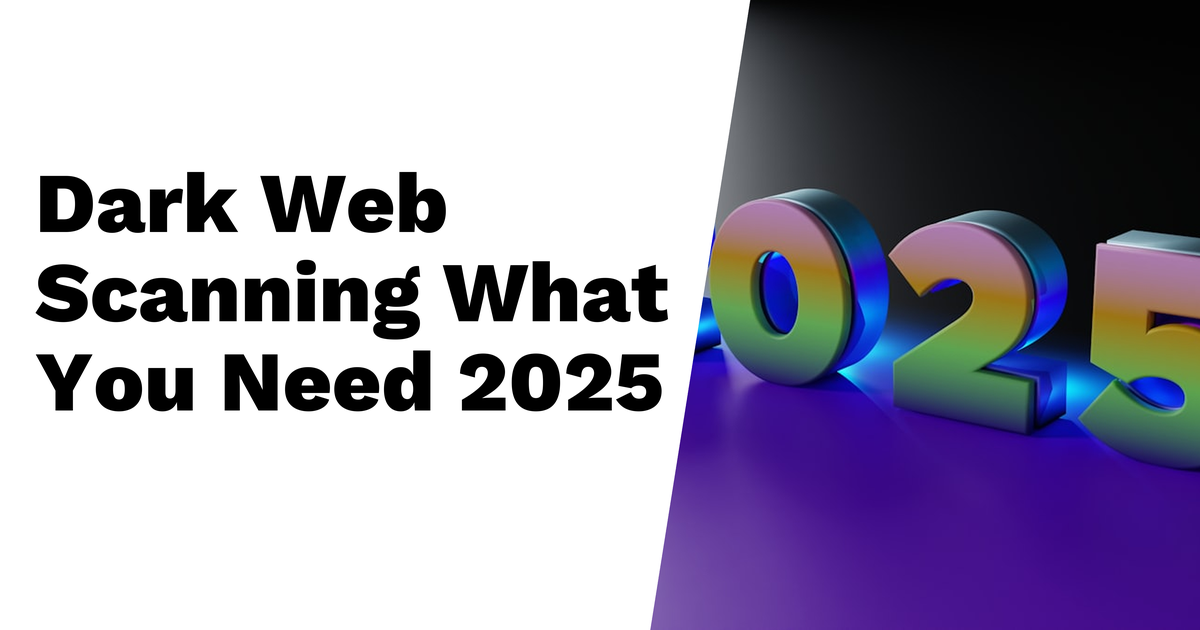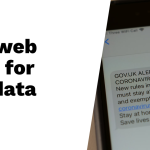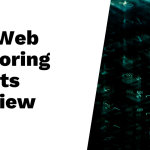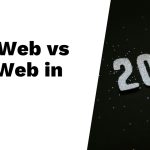Dark web monitoring is a vital practice as we move into 2025, where cyber threats are increasingly common. It involves continuously scanning hidden areas of the internet for stolen or leaked data, which can provide crucial early warnings against attacks fueled by stolen credentials. With incidents of such breaches expected to rise, organizations must take this seriously to comply with regulations and protect sensitive information. Effective monitoring uses tools that offer continuous alerts and enrich threat intelligence, making it essential for sectors like finance and healthcare. Still, challenges persist due to the complexity of the dark web and limitations in data recovery efforts.
Table of Contents
- Understanding Dark Web Monitoring
- Importance of Dark Web Monitoring in 2025
- Functionalities of Dark Web Monitoring
- Key Trends in Dark Web Monitoring
- Who Needs Dark Web Monitoring?
- Challenges and Limitations
- Best Practices for Implementing Dark Web Monitoring
- Frequently Asked Questions
1. Understanding Dark Web Monitoring
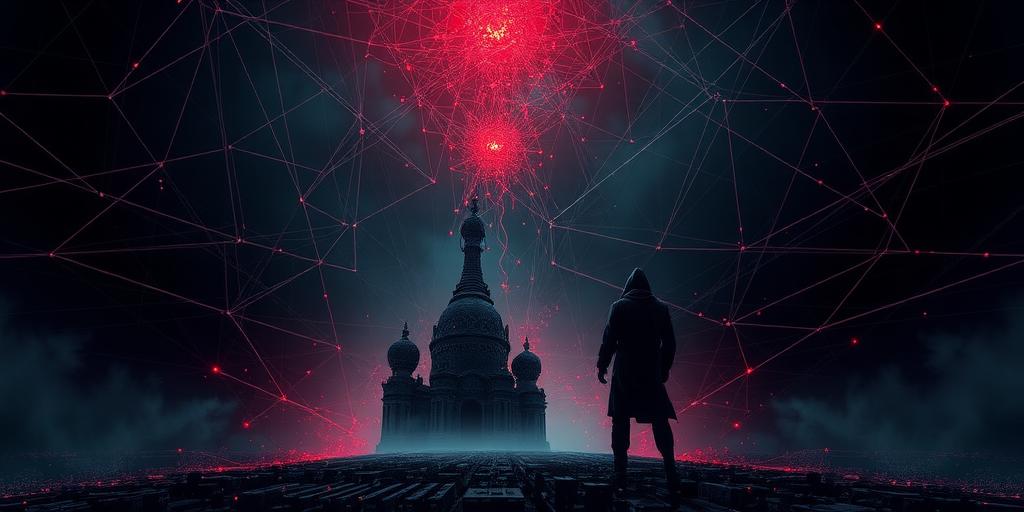
Dark web monitoring focuses on finding compromised personal information like email addresses and passwords. It acts like a digital watchtower, constantly scanning hidden areas of the internet for illegal activities. Many organizations integrate dark web monitoring into their cybersecurity strategies as it helps uncover both personal and corporate data leaks. Automated tools sift through enormous amounts of data, identifying potential risks in real-time.
This kind of monitoring is vital for users as it typically provides alerts when their information surfaces on dark web forums or marketplaces. The insights gained can significantly shape security policies and practices, allowing organizations to assess the effectiveness of their data protection measures. By fostering awareness of dark web threats, companies can encourage a culture of security among their employees. Given the ever-changing landscape of the dark web, continuous monitoring is essential to stay ahead of potential breaches.
2. Importance of Dark Web Monitoring in 2025
dark web monitoring is becoming increasingly vital in 2025 as cyber threats grow more sophisticated. With nearly half of all data breaches stemming from stolen credentials, organizations must act quickly to identify and respond to potential leaks. Cybercriminals are not just targeting usernames and passwords; they are increasingly focused on personal data that can be exploited for identity theft and fraud. This trend underscores the need for proactive measures that keep sensitive information secure.
Moreover, the pressure is mounting on organizations to demonstrate due diligence in protecting customer data. Regulatory bodies are enforcing stricter penalties for non-compliance, making dark web monitoring essential for meeting legal obligations. The financial fallout from a breach can be staggering, with average costs reaching around $4.45 million. Early detection through monitoring can significantly mitigate these costs by enabling rapid response to incidents.
The rise in remote work also introduces new vulnerabilities, making it crucial for businesses to have ongoing insights into potential threats. As the digital landscape continues to evolve, staying informed about dark web risks can enhance an organization’s overall resilience. Investing in dark web monitoring tools not only protects sensitive data but also serves as a competitive advantage, showcasing a commitment to robust cybersecurity practices.
3. Functionalities of Dark Web Monitoring
Dark web monitoring tools offer a range of functionalities that help organizations stay ahead of potential threats. One key feature is the ability to track specific keywords related to an organization or individual, enabling targeted monitoring of relevant discussions or data leaks. Many platforms provide customizable dashboards that visualize monitoring data and trends, allowing users to grasp the landscape of potential risks easily.
Integration with existing security systems is another crucial functionality, as it streamlines threat response efforts. Users can set alerts for specific types of data breaches or leaks, ensuring that stakeholders are promptly notified when a danger arises. Reports generated by these monitoring tools yield valuable insights, assisting in risk assessments and informing security strategies.
Moreover, some tools extend their scanning capabilities to social media platforms, identifying leaked information that could affect an organization’s reputation or security. The ability to monitor multiple languages and regions broadens the scope of threat detection, making it easier to spot risks in an increasingly globalized digital environment. Advanced tools leverage AI to identify emerging threats by analyzing patterns in dark web activity, enhancing the speed and accuracy of threat detection. Analytical tools also help organizations understand the potential impact of detected threats, supporting informed decision-making. With user-friendly interfaces, even non-technical staff can engage with monitoring tools, making cyber threat awareness a shared responsibility across the organization.
4. Key Trends in Dark Web Monitoring
In 2025, several key trends are shaping dark web monitoring. First, the use of blockchain technology is on the rise, helping organizations verify the authenticity of data more effectively. This trend is crucial as it provides a layer of trustworthiness in an environment rife with false information. Additionally, companies are increasingly seeking partnerships with cybersecurity firms to enhance their monitoring capabilities, understanding that collaboration can lead to better protection against evolving threats.
The emergence of decentralized marketplaces on the dark web poses new challenges for monitoring, making it harder to track illicit activities. These marketplaces often operate beyond traditional boundaries, complicating efforts to identify stolen data. Furthermore, increased collaboration between public and private sectors is influencing monitoring strategies, fostering a more unified approach to tackling cyber threats.
With growing emphasis on privacy and data protection, innovation in monitoring technologies is accelerating. Organizations are prioritizing employee training to help staff recognize potential dark web threats, thus enhancing overall security awareness. Automation is also becoming a trend, streamlining monitoring processes and allowing teams to focus on strategic decisions rather than manual tasks.
As remote work continues to rise, mobile monitoring solutions are gaining traction, enabling organizations to stay vigilant no matter where their teams are located. Regular updates to monitoring tools and practices are essential to keep pace with the rapidly evolving threat landscape. Finally, the focus on user-friendly solutions is making dark web monitoring accessible to smaller businesses, allowing them to safeguard their assets without requiring extensive resources.
5. Who Needs Dark Web Monitoring?
Dark web monitoring is essential for various sectors, especially those that handle sensitive information. Organizations in finance and healthcare are prime targets for cybercriminals due to the valuable personal and financial data they possess. For instance, a healthcare provider may store patient records that, if compromised, could lead to severe consequences. Educational institutions also store vast amounts of personal data about students, making them vulnerable to data breaches.
Surprisingly, small businesses often underestimate their risk, yet they can benefit significantly from monitoring. These companies may not have the same resources as larger organizations, but they still need to protect their customer information. Additionally, companies that handle intellectual property should be vigilant. Protecting innovations from theft is crucial for maintaining a competitive edge.
E-commerce platforms, which frequently process customer data, are at high risk for breaches. A leak in this sector can severely damage a company’s reputation and customer trust. Non-profits and charities storing donor information can also enhance trust through monitoring, ensuring that sensitive data is secure.
Government agencies face increasing threats and require robust monitoring solutions to safeguard classified information. In a broad sense, any business with an online presence should be aware of potential dark web threats. This includes monitoring for third-party vendor relationships, as shared risks can expose organizations to vulnerabilities.
Individuals concerned about identity theft should consider personal dark web monitoring solutions. This proactive approach can help detect compromised credentials before they lead to serious issues.
6. Challenges and Limitations
Dark web monitoring faces significant challenges and limitations that organizations must navigate. While it can identify data leaks, it does not prevent them, leaving organizations vulnerable until a breach is discovered. The dark web is vast, and sifting through its immense data can be daunting; distinguishing between genuine threats and irrelevant information often proves difficult. It usually requires specialized skills to effectively analyze the data, which can be a barrier for many organizations. Furthermore, many monitoring tools do not cover all dark web sources, creating potential blind spots in threat detection.
The constantly evolving nature of the dark web means that monitoring tools need frequent updates to remain effective. Legal and ethical complexities also arise, particularly when monitoring across borders, which can complicate efforts to protect sensitive information. Many organizations may struggle to allocate the necessary resources for comprehensive monitoring, leading to gaps in their cybersecurity strategies. Misinterpretation of dark web data can either provoke unnecessary alarm or result in inaction, both of which can have severe consequences. Lastly, once data is leaked, recovering it remains a considerable challenge, highlighting the importance of preventative measures rather than solely relying on monitoring.
7. Best Practices for Implementing Dark Web Monitoring
To effectively implement dark web monitoring, start with a thorough risk assessment to pinpoint what sensitive data needs watching. This helps tailor your monitoring efforts to your organization’s unique needs. Selecting the right monitoring tools is crucial. Look for solutions that align with your budget and the specific threats you face. Regularly reviewing and updating your incident response plans to incorporate insights from dark web monitoring ensures you are prepared to act swiftly when threats are detected. Establishing a dedicated team focused on monitoring and responding to alerts can enhance your organization’s readiness to tackle potential risks. It’s equally important to foster a culture of cybersecurity awareness among all employees through ongoing training sessions. This will prepare them to recognize threats and understand their role in protecting sensitive information. Integrating your monitoring tools with existing cybersecurity measures creates a cohesive defense strategy. Engaging with external cybersecurity experts can further bolster your monitoring efforts, providing additional insights and guidance. Don’t forget to create a clear communication plan to keep stakeholders informed about any potential threats identified through monitoring. Lastly, evaluating the effectiveness of your monitoring tools regularly and staying updated on the latest trends in dark web monitoring technologies will help you adjust your strategies as needed.
- Conduct a thorough risk assessment to identify what data needs monitoring.
- Select monitoring tools that align with your organization’s specific needs and budget.
- Regularly review and update incident response plans to include dark web monitoring insights.
- Establish a dedicated team responsible for monitoring and responding to alerts.
- Foster a culture of cybersecurity awareness among all employees through ongoing training.
- Integrate monitoring tools with existing cybersecurity measures for a cohesive strategy.
- Engage with external cybersecurity experts to enhance monitoring efforts.
- Create a communication plan to inform stakeholders about potential threats identified by monitoring.
- Evaluate the effectiveness of monitoring tools regularly and make adjustments as needed.
- Stay informed about the latest trends and developments in dark web monitoring technologies.
Frequently Asked Questions
What is dark web scanning and why is it important?
Dark web scanning is a process that looks for stolen personal information on hidden parts of the internet. It’s important because it helps you find out if your data has been leaked, so you can take steps to protect yourself.
How do I know if my information is on the dark web?
You may know if your information is on the dark web through dark web scanning services that search various sources for your data and alert you if they find anything suspicious.
Is it safe to access the dark web?
Accessing the dark web can be risky because it has illegal activities, and you might expose your device to malware. It’s best to avoid it unless you have a specific reason and know how to stay safe.
What kind of information can be found on the dark web?
On the dark web, you can find personal data like social security numbers, credit card details, or email accounts, as well as illegal items and services.
How often should I check for my information on the dark web?
It’s wise to check for your information on the dark web regularly, maybe every few months, especially if you’ve been involved in a data breach or if you suspect your information could be at risk.
TL;DR In 2025, dark web monitoring is crucial for organizations facing rising cyber threats and the challenges of regulatory compliance. It helps identify compromised data early, potentially reducing the financial impacts of breaches. Continuous monitoring outperforms one-time scans by providing timely alerts and enriching threat intelligence. Key trends include the use of AI for faster threat detection and addressing risks from third-party vendors. Organizations in finance, healthcare, and education, among others, should implement robust monitoring tools and develop clear response strategies to effectively manage risks associated with dark web exposure.

